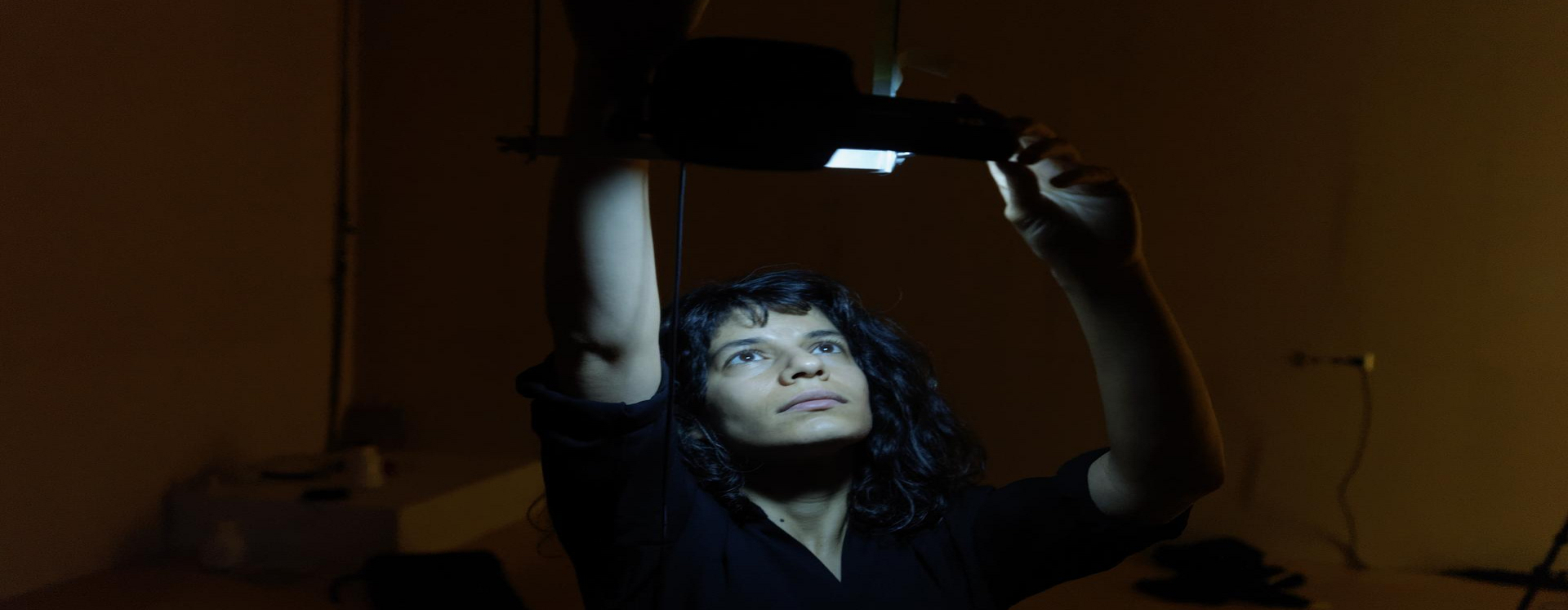The Waiting Room
A fragment of an interview :
- .....
- Ok, I see, but Forough, some find your artistic work indirect or better to say, far from the
research-practice that your works stem from. How do you feel about that?
- Instead of dissecting my research-practice and instead of defending my works,
particularly the one that you are referring to, “The waiting room”, let me start with this:
Fears are subjective and intersectional, therefore the name of my research-practice;
“Fears in Motion” could trigger multiple anticipations and/or expectations for the
spectator about the content of, firstly, the research-practice and secondly, what kind of
outcome it should result into.
- Let me ask you, do you think that there is a difference talking about “Fears in Motion”
here in Europe where you are based, in comparison to the context of where you are
coming from?
- Based on our different identities, things are being projected on us. When hearing the
name; “Fears in Motion”, as a research practice of a woman from the Middle East,
immediately there are assumptions that are made.
Elements such as artist’s identity, background and relatively certain topics, could easily
be associated with certain forms of processes, presentations and aesthetics. It can
restrict and reduce the possible imaginations about the modes of engagement.
- Have you experienced such expectations and/or assumptions? How?
- I started this research-practice some years ago, as a way to face my own fears at the
time, to employ them as a motor. For me this was a beginning of a small personal play,
in order to change a narrative: instead of being a victim of paralysing forces, I wanted to
play.
As I went on, some of the smaller ones disappeared, reduced in their intensity or their
forces changed into generative ones. I formulated my little fun games as a serious
research-practice to try to find sustainable ways of allocating time and attention to it.
Now, I have a feeling that there are issues that need delicate care when being
formulated. If you insist on analysing the rules of the game, you may lose the time to
play it. When you are in the middle of a game it’s not the proper time to start reporting about what playing feels like, because then you will simply have lost the time that you could have continued playing. For me here is the threshold where issues with assumptions and
expectations from the educational and professional fields enter.
- Is “The Waiting Room” a game you are inviting your audience in?
- (She laughs) you could say so.
- Do you have an idea in which direction you would like to continue?
- I would like to reflect on the disparities that are embedded in the variances in perspective.
The differences of reception and feedback in the contexts different from the professional and
educational environments I’ve been part of, since I’m studying, living and working here,
to re-acknowledge those different perspectives that I have had access to.
- What about now?
- For now I’m thinking of modalities of sharing, with focus on not neutralising or
synthesising this sensation (I mean fear). I would like to continue my play as a
recognised way of reflection, research and practice. To play and to invite others into
it. I consider it as an immersive space where reality and imaginaries mingle. A space for the unexpected to emerge. It is a lighter form of engagement, that contains the weight of the
content that it is reflecting on.
- You know , when considering ......

Photography: Thomas van Lenden
Forough Fami
Forough Fami is an Iranian choreographer and dance artist currently based in Berlin where she lives and works individually as well as in collective constellations. Previously, she studied Bachelor of Choreography, Dance and Context at HZT. Her current research practice “Fears In Motion” includes several and ever-emerging sub-researches that revolve around the sensation of fear. By considering the variety of possible approaches that do not necessarily focus on theatrical settings, she examines the moving power of this sensation, which paralyzes beings.

Photography: Thomas van Lenden
The Waiting Room
The Waiting Room is an immersive space in which Forough Fami invites her audience to spend time. It’s an uncanny playground in a non-linearity of time. An invitation to the space of artist’s mind and studio, and an invitation to wait as the room is under construction.
Credits
- Type One:
Light design, Choreography and Performance: Forough Fami
Mentoring : Jee-Ae Lim
music: Richard Cartier
- Type Two:
Light design, Choreography and Performance: Forough Fami
performance: Fariborz Karimi, Simone Weber, Mami Kang
Mentoring : Liesbeth Groot Nibbelink, Aslan
music: Richard Cartier, Murcof
3D Modeling: Siavash Naghshbandi
Thanks: Young Art support Amsterdam, Velvet Leigh, Harco Haagsma, Udo Akemann, Das choreography tutors (Jeroen Fabious, Konstantina Georgelou) and DAS cohort

